Why do kayaks have holes in them, and is it intentional? Yes. The holes on your sit-on kayaks are called scupper holes or scuppers and are there by design.
Scupper holes drain water from your boat to keep it from capsizing when breaking through waves or paddling over rapids. Any water that splashes on your boat automatically flows out through these holes.
Read on for detailed information about scupper holes, including whether you can plug them or not!
Table of Contents
Why Do Kayaks Have Holes In Them?
Sit-on kayaks are designed with holes called scuppers to reduce the risk of the boat sinking. The holes allow in water and out while keeping the kayak stable and well out of the dangerous limits. That design also allows the paddler to stay clear of the water.
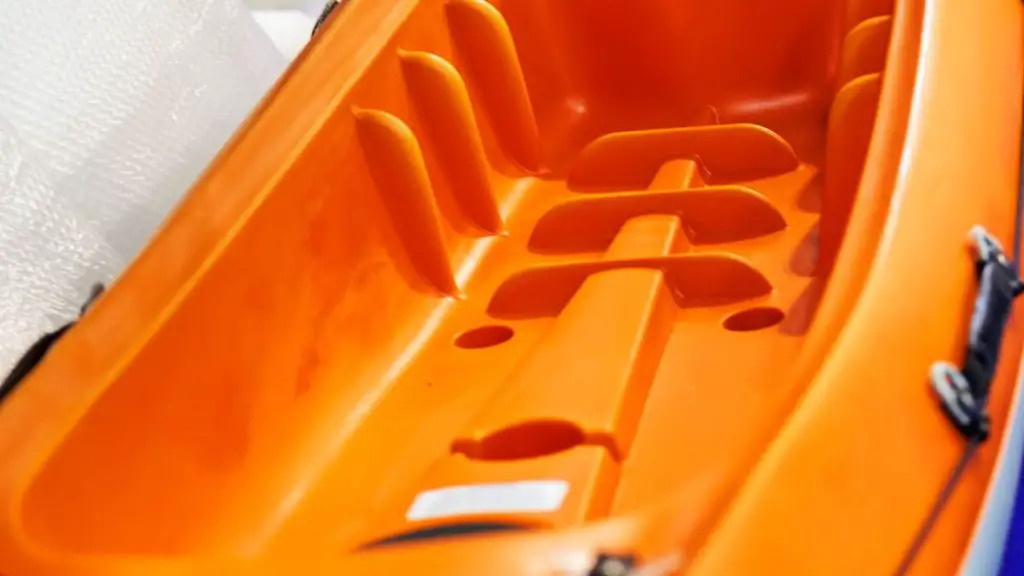
However, there are other purposes served by these scupper holes, which include the following:
Water Drainage
Water conditions may change over time. It is sometimes rough with huge waves that can bring water into your kayak. Also, kayaking in rapids will cause water to enter your boat. Without a way of draining that water, your boat cannot stay afloat for a long time.
Other ways water can enter inside your kayak include the following:
- Waves crashing against the kayak
- Splashing water when you’re paddling
- Kayak capsizes
- Water from the paddle itself
Scupper holes in a sit-on boat are, therefore, by design to help remove water that accidentally enters the kayak. The kayak can remain on the water, even in raging waters. In other words, scuppers are the safety features of your boat.
Aid In Ventilation
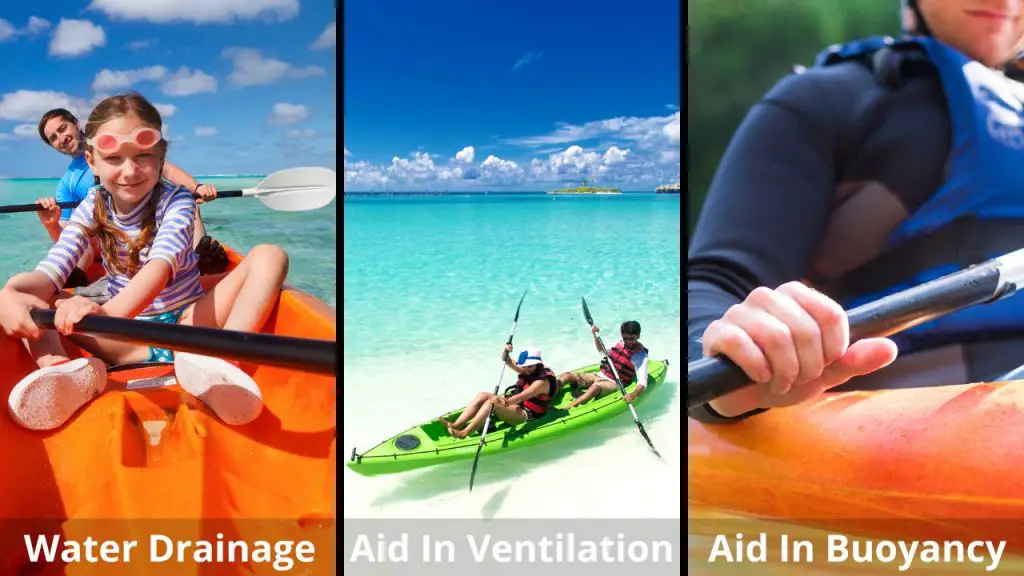
Scupper holes aid in ventilation by allowing you to release air from the cockpit, reducing the risk of capsizing. They are used together with scupper plugs to achieve the purpose.
By design, water flows out of the kayak without getting into the cockpit through the scuppers. That action prevents you and your boat from entering a dangerous zone that can cause your boat to capsize.
Aid In Buoyancy of The Kayak Above The Water
Scupper holes aid in buoyancy in a kayak since they drain excess water that can potentially add weight to your boat. The water can also slow down the kayak and require much paddling power to move.
With scuppers, your boat will remain light and afloat since all water gets drained away before it sinks your kayak.
How Many Holes in Kayaks?
The number of scupper holes in a kayak depends on the purpose. Safe kayaks have 4 scupper holes, but an average-sized one should have about 6-8 scuppers.
You will find scupper holes at the footwells, cockpit, or tank well. Regardless of the position, they automatically drain any water on the deck. However, you can block scuppers with scupper plugs to stay dry during your trip.
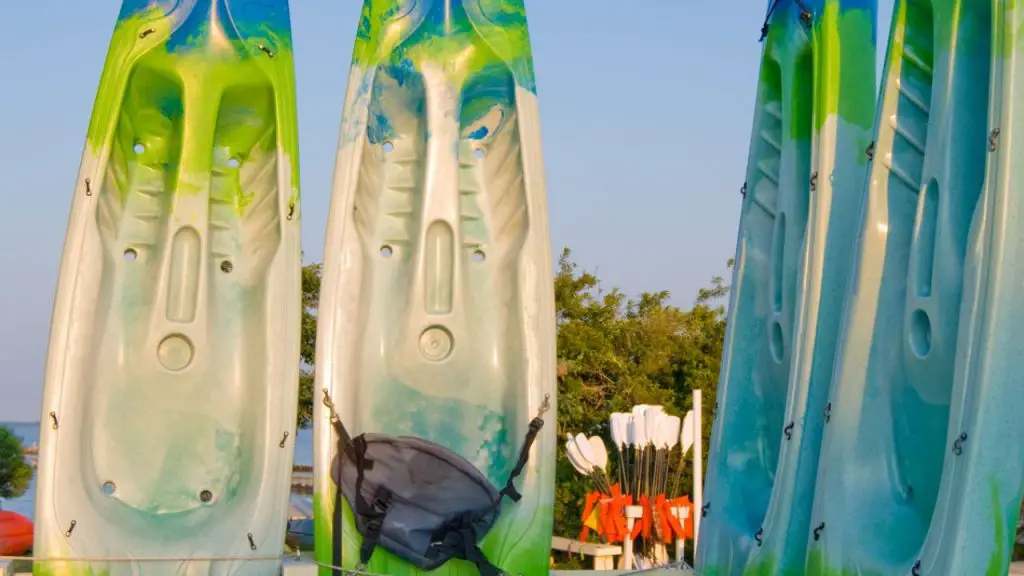
Do All Kayaks Have Scupper Holes?
No. Scupper holes are only available in sit-on kayaks, where they serve the purposes already mentioned. If you have a sit-in kayak, you will never find these holes.
That may look disadvantageous, but you can boast of staying dry during your trip or fishing exercise. No water can get into the hull because holes do not exist in these kayak types.
Can a Kayak Sink Because of These Holes?
No. You may wonder why someone intentionally puts a hole in your boat to capsize it. By design, scuppers are to drain away water pools that get onto the deck and not sink your kayak.
Your safety is guaranteed if you have these scupper holes. They make the kayak theoretically unsinkable by water.
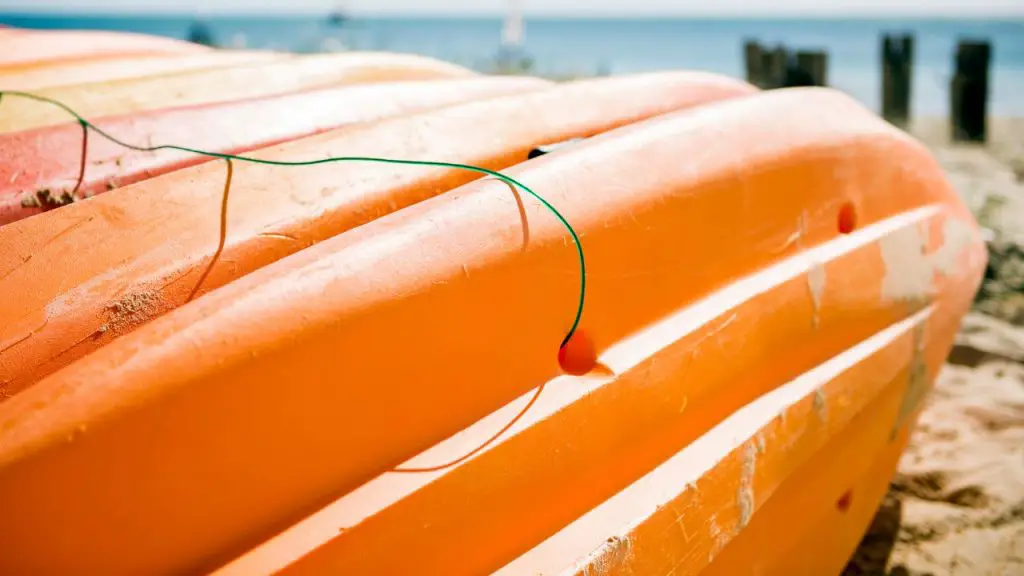
However, monitor the water level below your feet. Act upon the identification of abnormalities before it is too late.
Pros and Cons of Holes in Kayak
Scupper holes on your kayak come with many benefits, but not without a few drawbacks. Let’s quickly highlight the most common ones.
Pros:
- Aid in water drainage
- Keeps the boat afloat
- Aids in ventilation
- Enhances buoyancy of the kayak
Cons:
- Allow in water – impossible to remain dry.
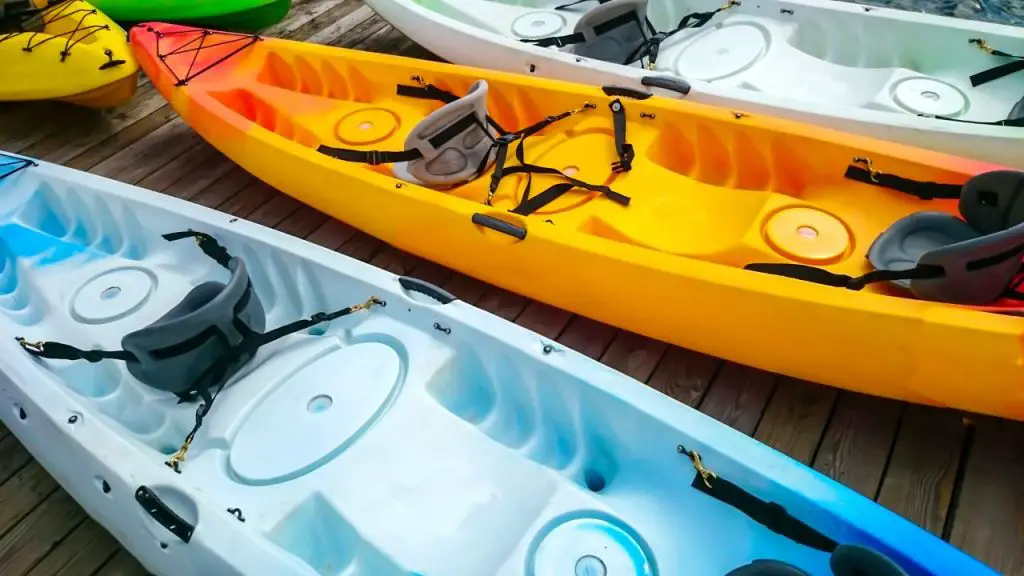
Can Scupper Holes Be Plugged?
Yes. You can plug scupper holes if you don’t want the boat to get wet. What it does is stop water from coming up or draining through them.
You can decide to plug just some or all holes on your kayak, but that will make it sit slightly higher above the water, which can lower its stability.
When Would You Plug Your Scupper Holes?
It all depends on your preferences. You can plug scupper holes if you don’t want to get wet or kayaking through water waves that can splash water onto your boat.
Plugging your scuppers comes with its advantages and disadvantages. As mentioned, When you plug the scupper holes, the boat will sit higher on the water. This can make for a faster paddle.
But, That can cause instability, especially in a windy situation. Maneuvering your boat can become very challenging!
If there are strong winds then unplugging scupper holes can help reduce speed because you’ll sit a bit lower on the water
When they’re unplugged and low in level with each other or open-water conditions this can make for a faster paddle because there’s less resistance from wind pushing against them than if their were plugged up while going forward through rough waters!
Hikeen 6 Pieces Kayak Plugs
How Many Scupper Holes to Plug or Unplug?
As mentioned, an average-sized kayak has about 6-8 scupper holes. But the number you want to plug or unplug depends on your specific situation.
You can plug or unplug all scupper holes on your boat. However, you should be guided by your size and weight. If you are lightweight and need to sit deeper in the water, leave as many scuppers unplug as possible.
But if you already have weight and heavy fishing gear onboard, plug almost all scuppers, beginning with the rear ones. It will give you a little lift and keep your boat drier.
PrideSports Practice Golf Balls, Foam, 12 Count, Yellow
FAQs
Are kayaks supposed to have holes in them?
Yes. Some kayaks are purposely designed with scupper holes to enhance safety when paddling. The holes aid in water drainage, ventilation, and buoyancy. In other words, scupper holes keep the boat afloat in different kayaking conditions.
Why are there holes to sit on kayaks?
Holes on a sit-on kayak are called scuppers. Their role is to drain water that accidentally gets into the boat when you are paddling or kayaking through waves and rapids.
They prevent your boat from capsizing but can serve other purposes during rescue operations and kayak transportation.
What is the point of scupper holes?
Scupper holes on kayaks are usually positioned at or near the ground level to drain water from the boat. They are often found at the footwells, cockpit, or tank well and are designed to be self-bailing.
Scupper automatically drains any water that comes into the boat, preventing them from overflowing on the deck.
Do all sit on top kayaks have holes?
Yes. All sit-on kayaks are designed with scupper holes to drain water and provide structural integrity to the boat. But don’t expect to find them on sit-inside kayaks.
Conclusion
Scupper holes are intentionally drilled on sit-on kayaks to drain away water and improve the boat’s structural integrity. They keep the kayak afloat by preventing possible water accumulation, thereby keeping it afloat.
Fortunately, you can plug or unplug any holes on the kayak, depending on your needs. That allows you to control how high you sit on the water.
Thank you for your time reading this article at Windpaddle. We appreciate your time and invite you to share this post with other paddlers in your cycle to help us reach many people. You can also explore the site for related content.



